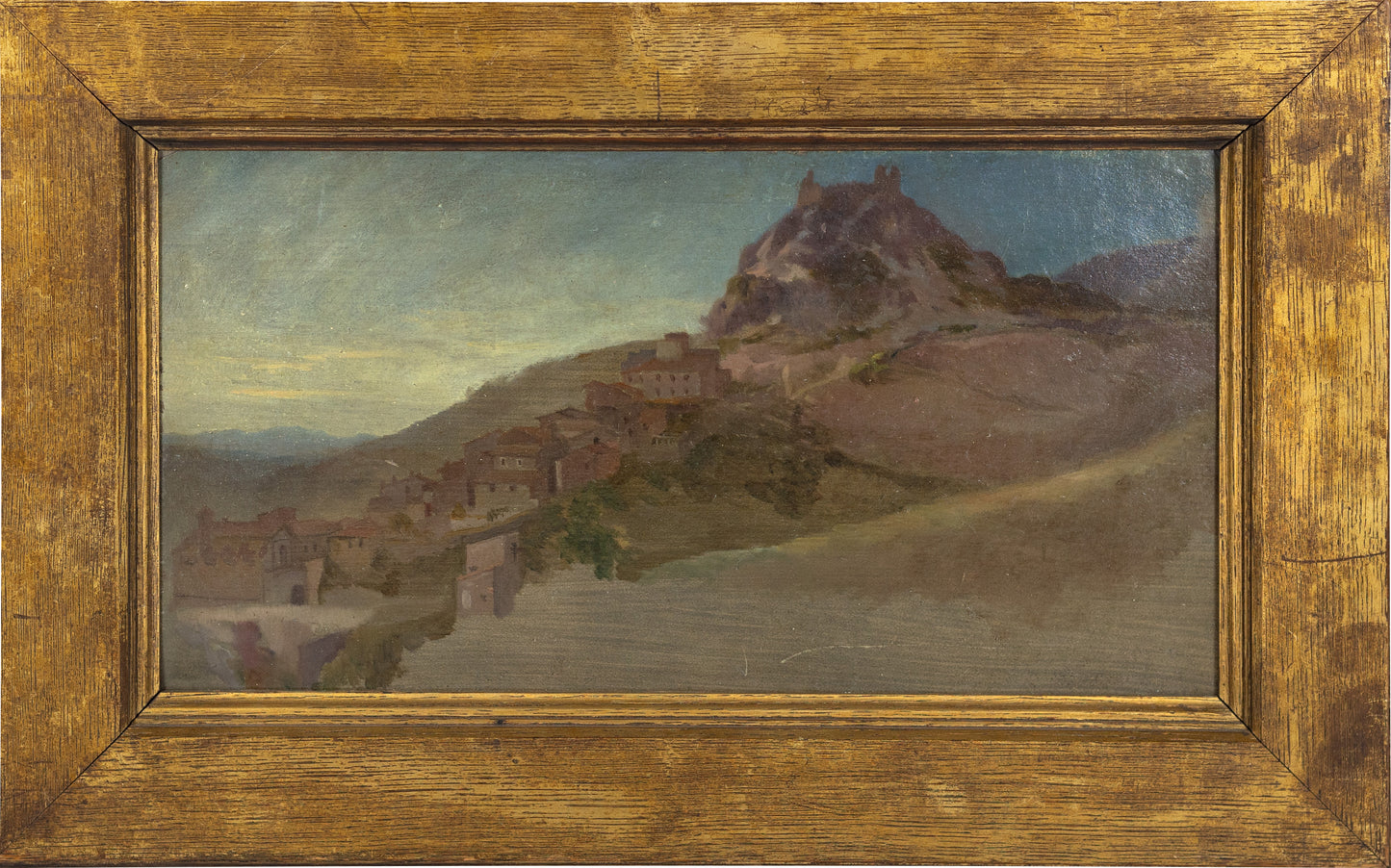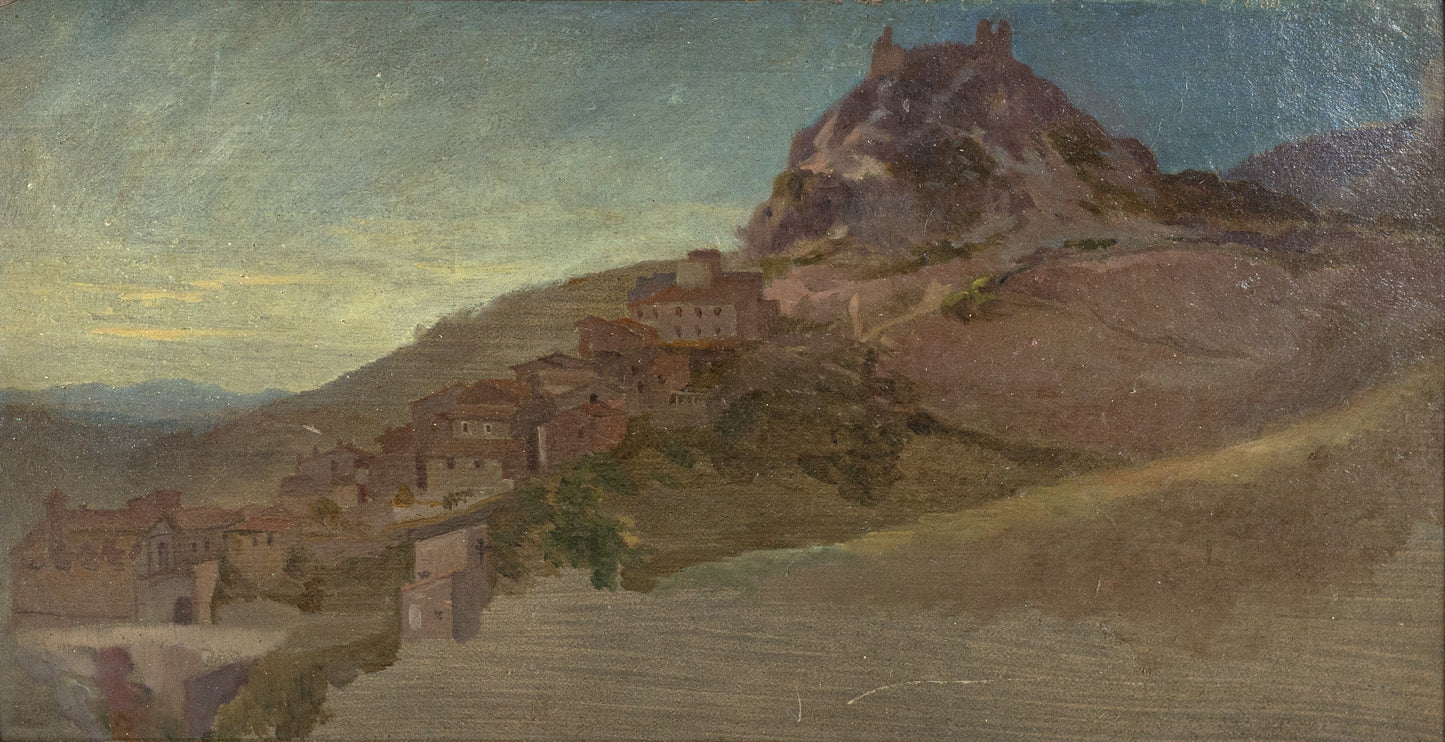from: 1016 Map Inventory
MASON, George Heming (British, 1818-1872). Castle of Petrella. Italy, c. 1850.
MASON, George Heming (British, 1818-1872). Castle of Petrella. Italy, c. 1850.
Couldn't load pickup availability
George Heming Mason (British, 1818-1872)
Castle of Petrella
Italy, c. 1850
Oil on canvas
7" x 13 1/2" canvas, 11 1/2" x 18 1/4" framed
This gorgeous yet understated oil painting depicts the Castle of Petrella in Italy just before Sunrise. The soft light creeps over the sleeping hillside village, illuminating the craggy peak where the castle lies.
George Heming Mason was a renowned English painter, once described as a genius by Millais, and seen as an important landscape artist in the late nineteenth century. Mason left England for Italy in 1844, where he remained for the rest of his life. In 1848 he was accused of espionage by papal authorities and was nearly executed, however, he managed to escape and eventually became a thriving member of an Italian community of artists.
When Mason's father's Staffordshire pottery firm failed in 1848, his allowance terminated and he turned seriously to painting. In the early 1850s he met Giovanni Costa and Frederic Leighton; Costa molded Mason's style, and Leighton provided lifelong financial support. Mason, Costa, and Leighton formed the Etruscan school with other foreign artists.
Mason was also influenced by the work of the French artists that he saw at the Paris Exposition Universelle (1855), particularly Jules Breton and Alexandre-Gabriel Decamps. The best of Mason's early works record picturesque scenes with an unpretentious sunlit naturalism.
The castle of Petrella has a fascinating dark past. In 1597, dissolute nobleman Count Francesco Cenci, with his daughter Beatrice and his second wife, Lucrezia, moved from Rome to the Castle of Petrella, perched high on a craig in the Abbruzzi. The castle was situated in the Kingdom of Naples just beyond the borders of the Papal States; rumor was divided as to whether his purpose in moving was to devise new crimes beyond the reach of vigilant Roman authorities, or to escape his creditors.
Francesco was intent on keeping Beatrice under his control in the castle indefinitely so as to prevent her marriage and the burden of a dowry. What began as residence passed into imprisonment, with Beatrice and her stepmother being confined in a room whose windows were walled up and replaced by air vents. Beatrice and her mother plotted to kill Francesco with the help of several servants, one of whom was romantically entangled with Beatrice. After the murder of Francesco, Beatrice, her mother, and the servants involved were all sentenced to death, in spite of the cruel conditions that inspired the murder.
In the seventeenth century, fanciful accounts of the case were published that purported to have been authored immediately after the executions but may have been written decades later. One such version inspired Shelley to write his drama, the Cenci, in 1819.




